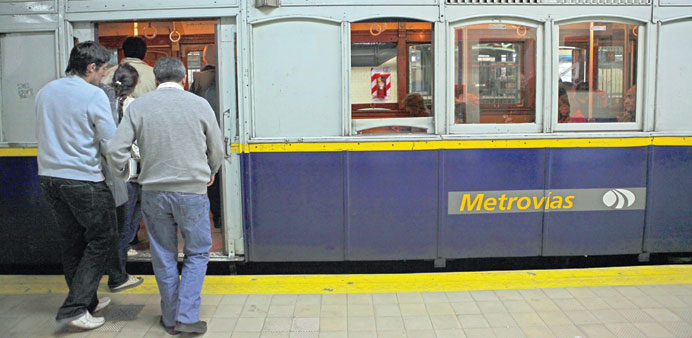The oldest underground line in the world is
set for renovation and will bring in features
like modern air-conditioned coaches from China.
By Ignacio Pereyra
Argentina’s authorities have begun to dismantle 100-year-old wooden cars that are part of the capital city’s crumbling underground system and change them for modern air-conditioned ones made in China.
The Buenos Aires underground or metro system is the oldest in the world and serves about 1mn users daily. The six-line network covers 48km.
Some users said they were sad that the wooden cars were being trashed. They were made in Belgium by the La Brugeoise firm and first used in 1913, exactly 100 years ago. But there were other commuters who hailed the renovation, saying the old cars made a lot of noise, shook a great deal during rides and were not comfortable.
The head of the Buenos Aires underground firm Subterraneos de Buenos Aires (SBASE, by its Spanish acronym,) Juan Pablo Piccardo, said that experts found that Line A “had cars that were irrecoverable and the general state of the fleet was mediocre.”
The Buenos Aires underground firm is planning to introduce another 105 cars by 2015 so that trains can speed up and ride time between stations be reduced to less than three minutes.
Renovation work began in mid-January and is expected to continue over a two-year period. Authorities shut down Line A, which starts at the famous Plaza de Mayo in front of the Government building and was the first metro line to be built.
Ninety-five wooden cars were set to be replaced and the line is scheduled to begin operating again in mid-March, using the new Chinese-made cars.
Metro authorities also plan to open the Plaza Flores and San Pedrito stations that could not be used previously because the fleet of cars was insufficient. Trains will also be changed in the following two years to make them safer and more comfortable but also to speed up the service.
The Buenos Aires underground system is this year for the first time under the management of City Hall, led by Mayor Mauricio Macri, a member of the opposition to the government of Argentinan President Cristina Fernandez.
Friction between the two politicians led to the temporary stopping of the subway service during 2012. Then management was transferred to the city government.
Currently there is controversy over the price of underground tickets. Macri says the real cost of a ride is six pesos ($1.20) but with the government subsidy commuters will pay 3.50 pesos by the end of March. The underground tickets have been at 2.50 pesos.
The Fernandez government was opposed to increasing the price of tickets because the neediest citizens, who use the underground the most, will be hardest hit by the increase. But Macri has held fast to his intention to raise the ticket price and also ruled out expanding the network in the short term because he says he needs to attract investment to the city first.
“I do not see as viable new expansions because the city has to invest over 10bn peso,” he said.
Experts gathered at the Imperial College of London last year found that for the Buenos Aires underground to be more efficient, safe and modern it needs to lay down new tracks, increase the number of cars and implement a new ventilation system.
Suburban transportation experts and officials from different world cities estimated that in order to improve the Buenos Aires underground, investment in the order of $250mn per year over a decade is needed.
Nonetheless, SBASE does have another expansion plan that involves building three more lines to increase the distance covered to 100km and with a capacity to carry 2.4mn passengers, more than double the current number of daily users.



